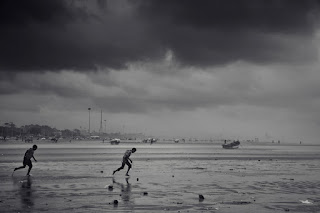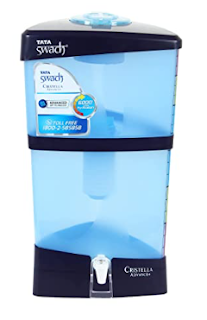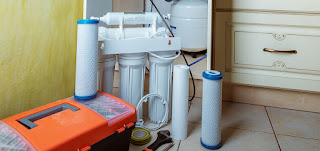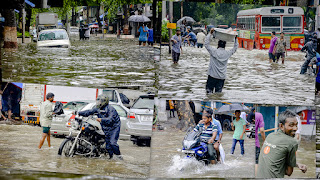Hot Water Systems: Centralized and Decentralized Domestic Hot Water Systems: Solar Water Heater Systems in India
In this growing world, building energy consumption accounts for around 34-35% of the total energy consumption and the range is increasing exponentially day by day. Domestic water heating without paying money is an extremely attractive option if we can use freely available solar energy.
Solar energy as a renewable energy source can
reduce the over-exploitation, regulate the thermal energy mixing and help in
ecological balance. India receives a mean daily solar radiation of 5-7 kWh/m2
with approximately 275-276 sunny days in a year.
The Solar hot water system is considered the most common method to store
and use thermal energy in terms of sunlight. Solar Hot Water Systems (SHWS) are
used solar energy to heat water. The Domestic Solar Hot Water Systems (DSHW)
are more extensively used in India than the previous one because of their
simple design, higher output, longer life span with low maintenance, and easily
available with local production.
The centralized hot water systems are not used in most parts of India. The
reasons can be explained considering the varying climatic conditions depending
upon geographical areas and the economic status of the population. So, if we consider
the climatic condition, the culture of the region, the economy of people, and the
energy supply as important factors, we can assume the necessity of a centralized
hot water supply system.
Most of the time of the year in Himalayan regions and Gangetic plains are
having temperatures less than 18 degrees Celsius which makes them use hot water
throughout. In these areas, the use of a centralized Hot water supply system makes
more sense than the cities like Chennai and Mumbai. In order to have sufficient
hot water with a moderate temperature, we need to have a centralized storage
capacity that can help is time-saving. In addition, if we use a high recovery
unit, we don’t need high-capacity storage but we need a secure, renewable
source of energy supply.
Centralized Domestic Hot water System
The basic activity of the system is to heat, store, distribute, and pump
back to the generation unit if not required. The energy consumption in the centralized
case can be in various ways like the consumption of energy in heating the cold
to hot water, heat loss during distribution, valves, pipes, and exchangers, and
consumption of electricity in pumping. So, to minimize the consumption of
energy and heat loss, most developed countries use the typical heating
techniques like gas-fired or coal-fired boilers, and simultaneously without
supplying water in a flow, they supply through various sub-stations to
localities as well as multi-story buildings.
Even if we follow the above process, hot water circulation systems always
have high heat energy loss during the circulation. The loss of energy is higher
than the energy used for heating and the proportion can go higher if we
consider the hot water circulation for multi-story buildings or houses in
mountain regions like the Himalayan ranges or Gangetic plains. There can be
chances of cold-water clogging circulation pipes, which leads to draining off a
large amount of cold water before getting the hot water of the desired
temperature causing water loss and a high hot water bill, which concluded the
inefficiency of Centralized Domestic Hot Water Systems (CDHWS). In such systems, the hot water is supplied through vertical rise pipes from the stairwell, called distribution
pipes which connect the main pipes in the basement. The pipe systems are connected
with low initial investments and easier hot water consumption by a specific consumer,
whereas as there are no circulation systems given in the pipe system, there can
be a long wait to get hot water and an increased risk of growth of molds and
microorganisms.
To minimize the above disadvantages in a CDHWS in any developing country, the flow rate is increased to 0.21 km/sec with the required
temperature, and to minimize heat loss and maintain the temperature, the
pipe-in-pipe principle is introduced. The principle suggests casing pipe in which the
inner pipe circulates water back and the outer pipe leads away. The
pre-insulated pipes work with better efficiency than the normal pipe. In some
areas, the pipes are installed with electric cables to maintain temperature and
avoid the circulation of water.
A probable solution to Centralized Domestic Hot Water System Challenges
Flat Station Heat Exchanger
The flat station heat exchange is the decentralized type of domestic hot
water supply system adopted in many countries. The equipment is a small-scale
heat exchange unit with comprehensive control functions and metering
measurements of water and energy utilization. The system eliminates the
circulation pipes which reduces the initial investment cost and reduces the
heat loss which was high in the case of CDHWS. There are several benefits of a decentralized
heat water system over the centralized one like reducing pipe circulation
system up to 50-60% and corresponding heat loss from pipes. The water loss and
required temperature can be maintained. Apart from, energy-saving and low
investment cost, the flat station equipment can also provide an individual
connection with a meter, which will be effective in high-rise buildings and
houses in hilly areas. The flat station can utilize the local surplus heat from
industries.
Solar Domestic Hot Water Systems in India and Prices
The solar water heating system was introduced in 1984 by the central
government to promote solar thermal energy as a source of renewable energy in the
Ministry of New and Renewable Energy (MNRE). In 2010, the Jawaharlal
Nehru National Solar Mission (JNNSM) was launched by state and central governments
to promote ecological and sustainable growth in India while responding to India’s
energy security challenge. The mission objective was “The below 80-degree Celsius
challenge - solar collectors“ to achieve the application of solar heaters in
domestic and industrial areas below 80 degrees Celsius. The targets were in
three financial year phases, 7 million square meters in phase I (2010-2013), 15
million square meters in Phase II (2013-2017), and 20 million square meters in
Phase III (2017-2022).
The solar domestic hot water systems are commercially manufactured in
India and can give you in range of 100 to 300 liter of hot water per day at a temperature
range of 60-80 degrees Celsius. The initial investment cost is Rs. 15000-22,000
including the plumbing and other overheads, with a payback period of 2-3 years
when electricity is replaced, it excludes the pipe circulation system. The
water in the insulated storage tank can maintain the temperature for up to 8 hours.
The life span of the solar water heater will be 15-20 years. The black surface
can absorb solar radiation and make it trapped inside the insulated pipes. The
absorber glass plate is known as a Flat plate and is specified on the basis of the
area and direction of sunlight. The Flat-plate system is considered the most
typical type of solar water heater used and manufactured in India. However,
there are many other types of solar heaters such as Evacuated tube collectors
and Concentrating collectors.
You need to check the Bureau of Indian Standard (BIS), IS 12933 specifications for flat plate collector types of solar heating systems to assure the proper materials are being used in the system. The certification is done at six regional test centers supported by the Ministry of new and Renewable Energy even after the persistent demand from local manufacturers for local certification to sell the system and parts. You need to check the construction of the absorber plate for crack, coating, type of absorbent used, quality of glass plate, the material of the metal box, and thickness of the insulated pipe system.
In addition, you can provide electrical heating elements or gas heating elements for those days without sunlight. The typical solar flat plate system in India has an area of around 2 square meters and has an efficiency of giving 100 liters of hot water per day. The system is installed following an arc from east-south-west of 120 degrees so that the system will be shadow-free.

















